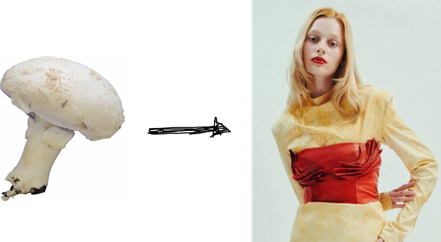The Chemistry Seminar at NU will continue with the invited research lecture on
"The fungal biorefinery: from fungi to materials"
by our guest speaker Professor Alexander Bismarck
Institute for Materials Chemistry and Research, Faculty of Chemistry,
University of Vienna, Vienna, Austria
Date: 7 February 2025, 18.00 Astana time
Biographical Information
Prof. Alexander Bismarck studied Technical Chemistry at TU Berlin (Germany), where he also completed his PhD in Polymer Science prior to joining the Surfactant & Colloid Group at the University of Hull as postdoctoral fellow. Before joining Imperial College London as lecturer in Chemical Engineering he spent time in industry working as R&D Engineer for Sulzer Composites in Winterthur (CH). Since 2012 he is Prof. of Materials Chemistry and Head of the Institute of Materials Chemistry of the Faculty of Chemistry of the University of Vienna, Austria. His research is focusing on various aspects of polymer materials with particular interests on interface design and manufacturing aspects of advanced composites, renewable materials and porous polymers. More recently our group explored the potential of the fungal biorefinery as a route the effortless isolation of fungal chitin material.
Prof. Alexander Bismarck studied Technical Chemistry at TU Berlin (Germany), where he also completed his PhD in Polymer Science prior to joining the Surfactant & Colloid Group at the University of Hull as postdoctoral fellow. Before joining Imperial College London as lecturer in Chemical Engineering he spent time in industry working as R&D Engineer for Sulzer Composites in Winterthur (CH). Since 2012 he is Prof. of Materials Chemistry and Head of the Institute of Materials Chemistry of the Faculty of Chemistry of the University of Vienna, Austria. His research is focusing on various aspects of polymer materials with particular interests on interface design and manufacturing aspects of advanced composites, renewable materials and porous polymers. More recently our group explored the potential of the fungal biorefinery as a route the effortless isolation of fungal chitin material.
Abstract
Greener alternatives to synthetic polymers are constantly being investigated and sought after. You will have heard about cellulose and also nano-fibrillated cellulose, an exciting material strong and stiff extracted from cell walls of plants. Chitin has, however, been largely overshadowed by cellulose when discussing the materials aspects of the nanosized components. [1] Chitin is a natural polysaccharide that gives structural support to crustacean shells, insect exoskeletons, and fungal cell walls. Like cellulose, chitin resides in nanosized structural elements that can be isolated as nanofibers and nanocrystals by various top-down approaches, targeted at disintegrating the native construct. The structural element in fungal cell walls is chitin linked to glucan. Fungal chitin can effortlessly be extracted from fungal biomass and form a ready-made nanocomposite, that could be potentially useful for the development of a single-sourced renewable reinforcement combining the strength of chitin and the toughness of glucan. The chitin-glucan material we will be talking about was extracted from common mushrooms (Agaricus bisporus) and tree bracket fungi (Daedaleopsis confragosa). As control material we used animal chitin extracted from crab shells (Cancer pagurus). We developed a mild extraction process to preserve the quality of the chitin-glucan present within the fungal source. Initially we will compare fungal- with animal chitin and then explore potential applications as films, membranes and leather alternatives for this type of material. We will show that in the case of fungal derived chitins the physical and mechanical properties do depend on its chemical composition.
Greener alternatives to synthetic polymers are constantly being investigated and sought after. You will have heard about cellulose and also nano-fibrillated cellulose, an exciting material strong and stiff extracted from cell walls of plants. Chitin has, however, been largely overshadowed by cellulose when discussing the materials aspects of the nanosized components. [1] Chitin is a natural polysaccharide that gives structural support to crustacean shells, insect exoskeletons, and fungal cell walls. Like cellulose, chitin resides in nanosized structural elements that can be isolated as nanofibers and nanocrystals by various top-down approaches, targeted at disintegrating the native construct. The structural element in fungal cell walls is chitin linked to glucan. Fungal chitin can effortlessly be extracted from fungal biomass and form a ready-made nanocomposite, that could be potentially useful for the development of a single-sourced renewable reinforcement combining the strength of chitin and the toughness of glucan. The chitin-glucan material we will be talking about was extracted from common mushrooms (Agaricus bisporus) and tree bracket fungi (Daedaleopsis confragosa). As control material we used animal chitin extracted from crab shells (Cancer pagurus). We developed a mild extraction process to preserve the quality of the chitin-glucan present within the fungal source. Initially we will compare fungal- with animal chitin and then explore potential applications as films, membranes and leather alternatives for this type of material. We will show that in the case of fungal derived chitins the physical and mechanical properties do depend on its chemical composition.

From fungi to materials to fungal leather alternatives with the help of designer Marlene Raymakers.
[1] Nawawi, W.M.F.B.W.; Jones, M.; Murphy, R.J.; Lee, K.-Y.; Kontturi, E.; Bismarck, A. Nanomaterials Derived from Fungal Sources—Is It the New Hype? Biomacromolecules 2020, 21, 30–55.
